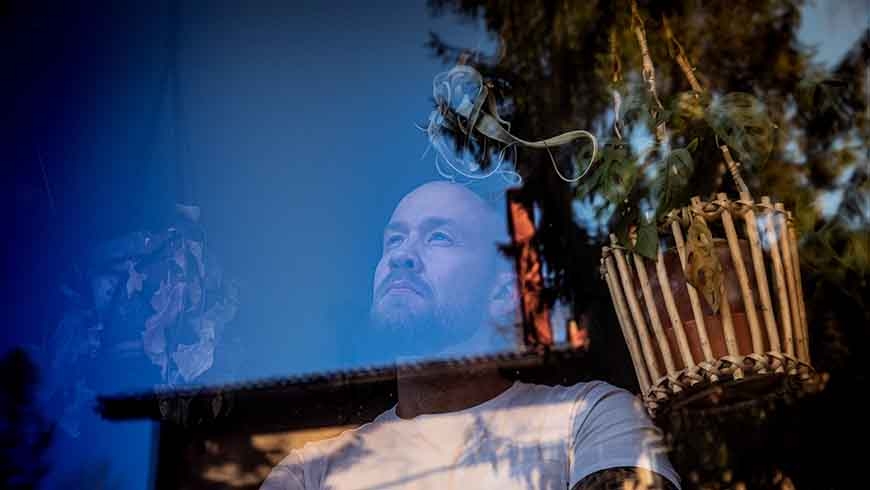
Headaches
There are many reasons for headaches and many tools for effectively dealing with them.
Headaches are a familiar pest to most. We all have them, yet each ache is essentially unique. That is why the best treatment for each ache should be custom made. Communication and co-operation between the physician and the patient are key to finding optimal methods of care.
A precise diagnose is fundamental for optimal care. There are over a 100 of different kinds of headaches. Finding a correct diagnose requires comparing experienced symptoms to existing symptom profiles of headaches: how one feels during the aches, what are the aches like, how frequent are they and so on.
Headaches - When should I go see a doctor?
Having a physician assess the situation is in order when dealing with a ”new” headache or when dealing with an old one that has recently become a problem. You can make an appointment with a general practitioner, a specialist treating you or your occupational physician. Ache symptoms taking a turn for worse or changing in nature may also call for a neurological assessment.
Headaches worsening
If a familiar ache is becoming increasingly uncomfortable and makes accomplishing daily tasks difficult, a doctor’s assessment is in order. Such cases include work and leisure activities being hindered by pain, even becoming unmanageable.
Painkiller headaches
Copious consumption of painkillers may result in painkiller headaches. For these aches, it is typical that the medicine helps alleviate pain momentarily, but then the aches keep coming back in shorter and shorter intervals. The drugs lose their potency and begin sustaining the headache. Any known painkillers may result in painkiller headaches. Opioid derived and combination drugs can be considered the worst of the bunch since they contain codeine and caffeine affecting the central nervous system.
The risk limits for excessive drug consumption are; 1 gram of aspirin or paracetamol more often than 5 days a week, 3 tablets of combination drugs for more than 3 days a week or a weekly consumption of at least 3 to 4 triptans. Ending the spiral of painkiller-related aches can be challenging and may in some cases require hospital treatment.
Headaches and nausea
If previously unresolved ache symptoms are accompanied by feelings of nausea or vomiting, a neurological assessment may be in order.
A neurologist can assess the ache’s key traits, conduct a thorough neurological examination and assess the need for additional examinations such as a MRI, which can reveal tumors, infection levels, infarcts, and vascular bulging. The results will lead to a reliable diagnose regardless of if the ache is present at the time of the examination.
What causes headaches?
Headaches are rarely caused by a disease. Most headaches are not a sign nor a symptom of another disease. The most common causes for headaches are muscle tension and migraines. Other frequent aches related to migraines are also common.
Other causes for headaches include external head trauma, vascular bulging or circulatory disturbances.
Muscle tension or migraine?
When a neurologist creates a symptom profile for the ache and conducts neurological inspection, they do not only find out what is causing the ache, but they also discover what is not causing it. These negative results, the elimination of tumors, for example, are often the most important and most relieving pieces of information for the patient.
The most common divide between aches is made between muscle tension related aches and migraines. Tension related aches can be painful, but are usually just a nuisance. Migraine on the other hand is a substantive problem.
Tension related aches are often consistent. For example, they may create sensations of “pressure in the head”. However, they are not often accompanied by sensations of nausea, heightened sensitivity to light or noise or strain as migraines are. Light exercise can often help with tension related pains, however with migraines this is not the case.
In most cases, tension pains can initially be managed with common painkillers. If the need for medication becomes frequent or increases in volume, there is a danger, that the intensity and frequency of the pains will increase as well and the need for medication will start to rise considerably. To prevent this, non-medical treatments such as physiotherapy or acupuncture can be considered in the acute stages of treatment.
Migraines are common, but often go without a diagnosis or proper care. Migraines tend to disturb free time and holidays such as well-deserved weekends after a hard week’s work. Customized care often defeats migraines quickly. It’s almost like putting out forest fires, when you get to it, you should get to it with determination and proper medication. If the medication only ”sort of” helps, there is a risk of slipping into an unnecessarily long and agonizing spiral of pain and medication.
So-called home remedies should not be underestimated when dealing with migraines. Peace, solace, darkness, cool room temperature, or sometimes even a coffee (caffeine) may help enhance other treatment methods. Non-medical treatments such as acupuncture and hypnosis have little known benefits for treating migraines.
Types of headaches
Primary types
- Migraine
- Tension related pains
- Frequents and chained headaches
Secondary types
- Trauma
- Circulation related
- Non-circulatory cranium related
- Rehabilitation related (pain killers, caffeine, alcohol)
- Infection related
- Disturbances in metabolism
- Structural disorders of neck or cervical spine
- Cranial neuralgia (for example trigeminal neuralgia)
- Other unclassified symptoms



